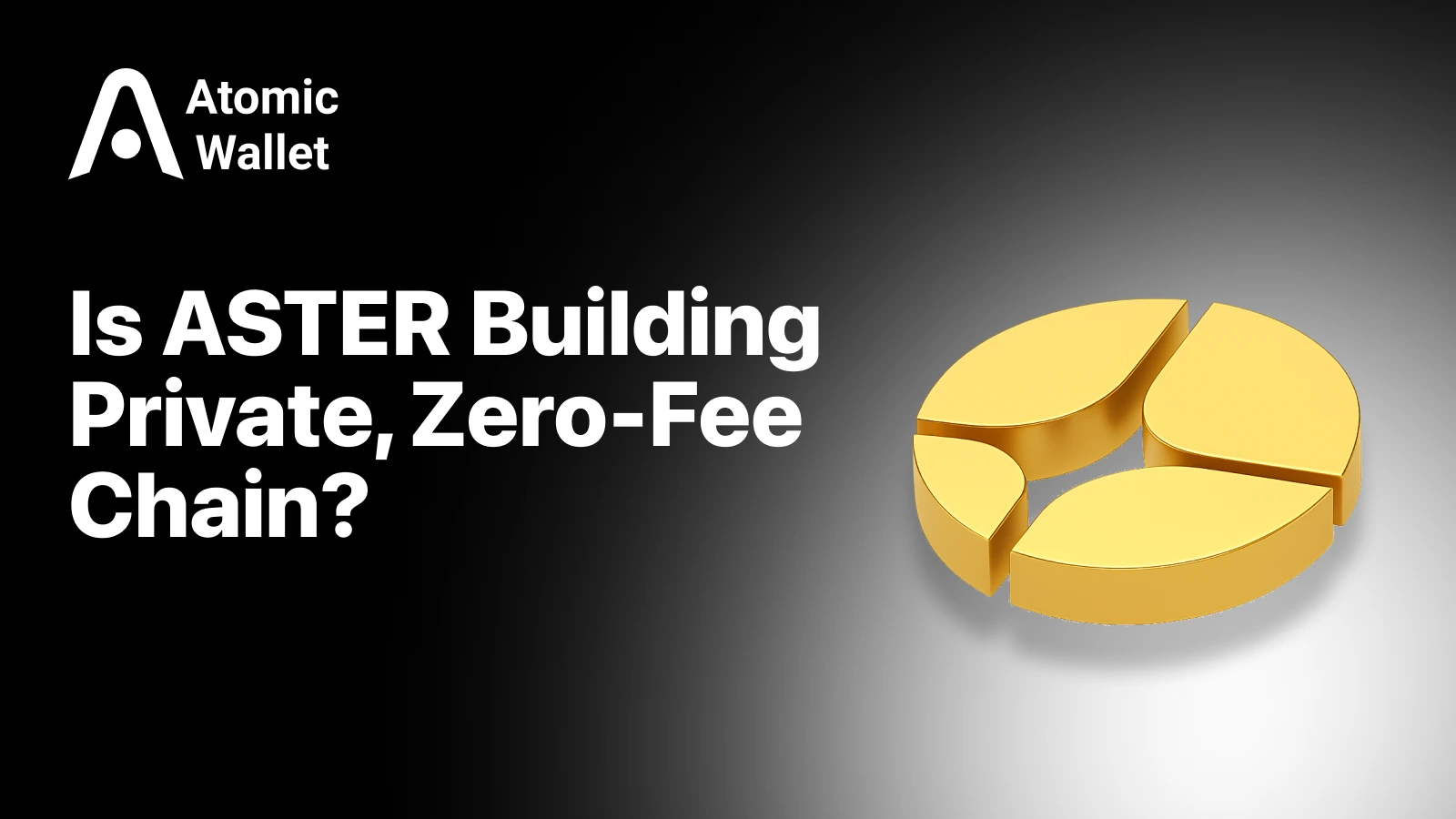Assets

Exchange

Buy Crypto




Here at Atomic Wallet, we look at hundreds of new projects and announcements every week. Most follow a familiar pattern. But every now and then, something comes across our desk that makes our entire team stop and say, “Okay, what’s going on here?”
That’s exactly what happened when we heard the latest from ASTER’s CEO.
The announcement was simple but packed a serious punch: the team is building a new public blockchain. This network has two huge promises that are almost unheard of in the same sentence- it’s designed to be both completely private and have zero gas fees.
For anyone who has ever watched a transaction fee eat into their trade or worried about their on-chain activity being tracked, this sounds less like an announcement and more like a wish list. It’s a bold vision, and when we see promises this big, our first move is always to dig deeper. So, let’s break down what ASTER is putting on the table and what it means for you.
As we always say, this is our analysis of the news, not financial advice. The crypto space moves fast, so we encourage you to do your own research as this project develops. It’s one we’ll be watching closely.
On the surface, “privacy-focused” and “zero-gas” sound great. But how? The mechanics behind these claims are what separate a game-changing technology from a marketing slogan.
First, the privacy. ASTER isn’t just talking about basic encryption; the project plans on running on zero-knowledge proof (ZKP) technology. If you’re new to ZKPs, we think the best way to understand them is with a simple analogy. Imagine you have a key to a secret room, and you need to prove to someone you have it without ever showing them the key. A ZKP is like a special, mathematical way of convincing them you have the key, just by showing them a secret handshake only the keyholder would know. Your secret is safe, but the truth is verified. For a blockchain, this means you can prove a transaction is valid without revealing the who, what, or how much. This is a major step toward true on-chain anonymity.
That covers privacy. But what about the cost? This is the part that made us lean in a little closer.
The CEO announced “zero gas fees at the protocol level.” This is a very specific and important phrase. We’ve seen some sources report it as “low fees,” which suggests there’s some nuance here. Our analysis is that ASTER isn’t eliminating costs entirely but shifting who pays for them. Think of it like a freeway versus a toll road. Most blockchains are toll roads- you pay a gas fee to use the network for every single transaction. ASTER appears to be building a freeway, where the road is free for drivers (users), but the maintenance is funded differently, perhaps through developers, dApps, or other network-level mechanisms. This model challenges the very foundation of how most blockchains operate, where fees directly fund network security.
So, who is this for? The announcement made it crystal clear: ASTER is being built for traders.
This isn’t a surprise to us. When we see a project focus on a specific niche, it tells us the team understands a real-world problem. For traders, especially those who execute dozens or hundreds of transactions a day, gas fees are a constant drag on profitability. A zero-fee environment removes that friction. It makes high-frequency strategies more viable and lowers the barrier to entry for everyone.
And the privacy? It’s not just about hiding. For traders, privacy is a strategic advantage. On a transparent blockchain, large trades can be spotted by bots that jump in front of the transaction to profit from the price movement, a practice known as front-running. A truly private network, powered by ZKPs, helps shield traders from this and allows them to execute their strategies without tipping their hand to the rest of the market.
By combining these two features, ASTER isn’t just building another blockchain. They are building a specialized tool designed to solve two of the biggest headaches for active traders.
So, what happens if ASTER pulls this off? A functional, private, and zero-fee blockchain is more than just a new platform; it’s a direct challenge to the status quo. Here’s our analysis of the potential ripple effects.
For starters, it puts serious pressure on other Layer 1 and Layer 2 solutions. Blockchains that compete on speed and low fees will now have to contend with a network that promises no fees. It forces a new conversation. Is the user-pays-gas model the only way to secure a network? ASTER is betting the answer is no, and its success or failure will provide a fascinating case study for the entire industry.
We see this as a turning point for how developers think about blockchain architecture. If a project can successfully fund its security and operations without direct transaction fees, it opens the door for a wave of new models. It could inspire other teams to get creative and find alternative ways to fund their networks, leading to more accessible and user-friendly platforms for everyone. This is the kind of innovation that pushes the whole space forward.
Of course, this is all based on an announcement. The road from a plan to a fully functioning, secure, and decentralized network is a long one. But the vision itself is powerful. It’s a reminder that the rules of blockchain are still being written.
To stay on top of this and other projects, download Atomic Wallet to securely manage your assets while you explore the future of crypto.

Learn how to buy Shiba Coin safely, follow each SHIB step, and stay updated with key shiba news in this beginner-friendly guide.